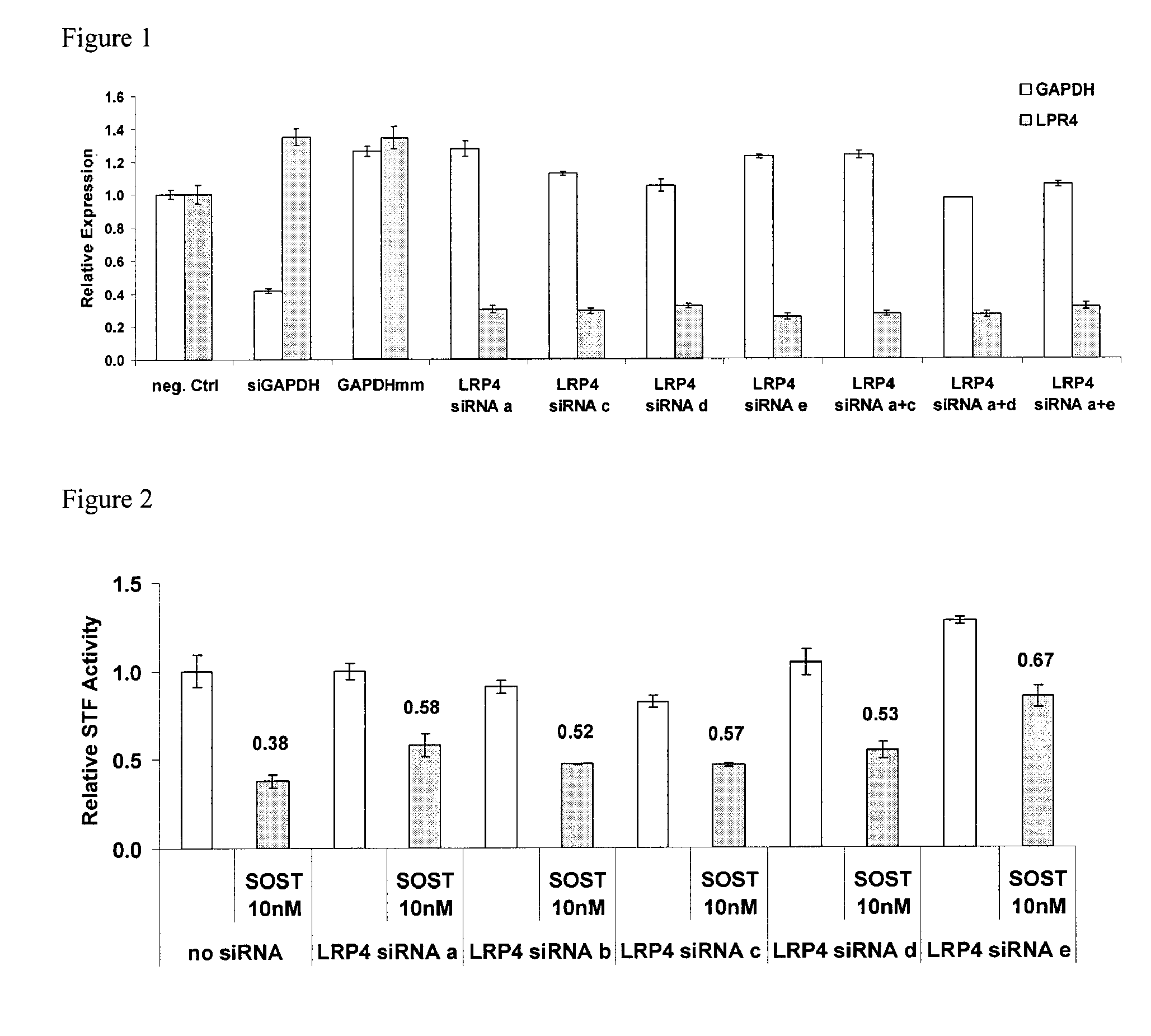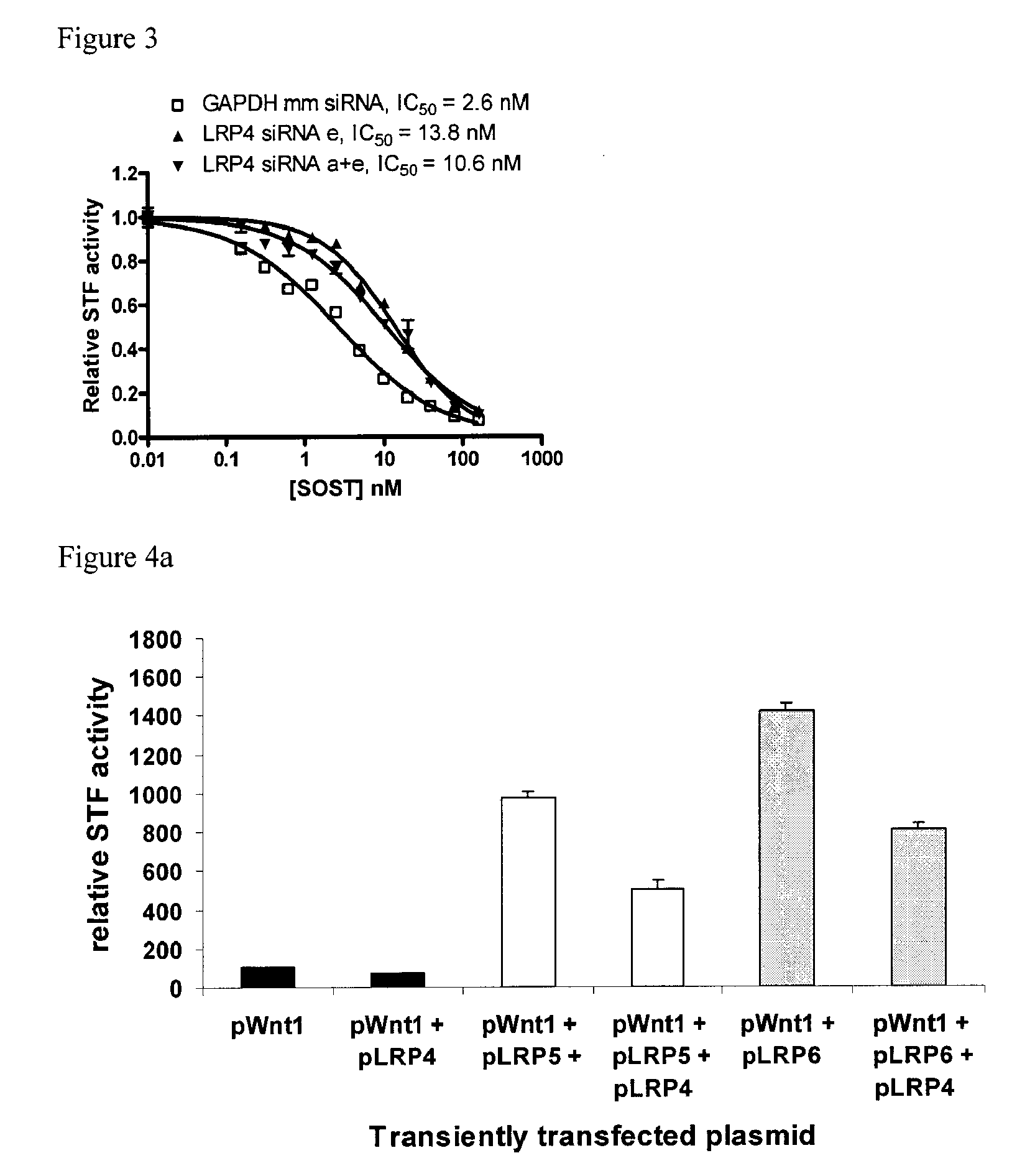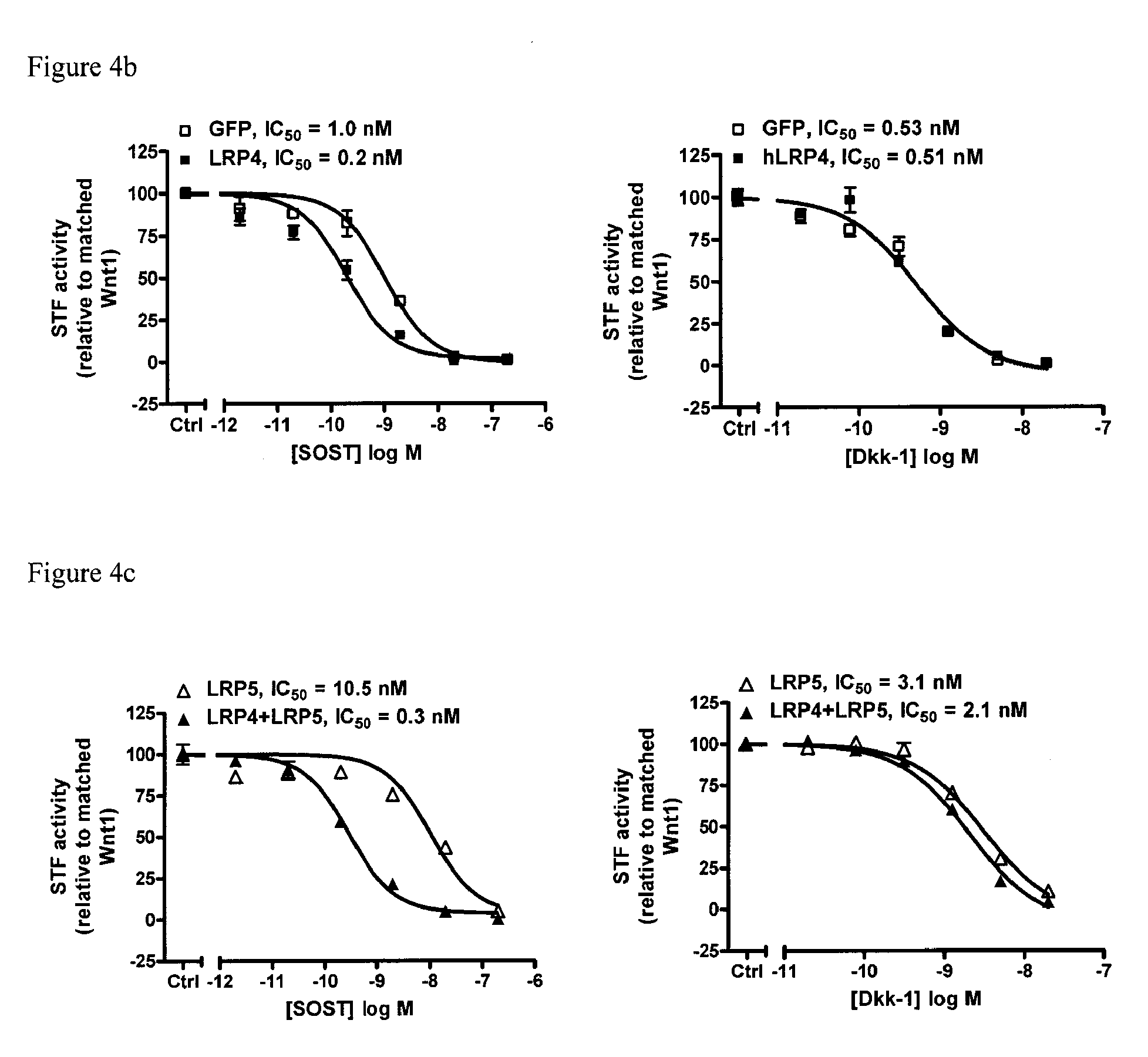Compositions and Methods to Treat Bone Related Disorders
a technology of bone related disorders and compositions, applied in the field of compositions and methods to treat bone related disorders, can solve the problems of pathologically increasing bone mass and strength, unable to substantially increase the bone density of adults, and unable to meet the needs of adults, and achieve similar or improved functional effects. similar or improved
- Summary
- Abstract
- Description
- Claims
- Application Information
AI Technical Summary
Benefits of technology
Problems solved by technology
Method used
Image
Examples
example 1
Discovery of Association Between Sclerostin and Sclerostin-Binding-Partners
[0288]In order to identify novel modulators of the sclerostin, BMP, and Wnt pathways, we applied a systematic tandem affinity purification (TAP) method to sclerostin. As described in Rigaut et al. (Nat. Biotechnol. (1999) 17(10): 1030), Seraphin and Rigaut WO 00 / 09716 Patent application) the contents of which are hereby incorporated by reference, the TAP purification method involves the fusion of the TAP tag to the target protein of interest and the introduction of the construct into the cognate host cell or organism.
[0289]The TAP tag is a tandem fusion of (i) IgG-binding units of protein A from Staphylococcus aureus (ProtA); and (ii) the Calmodulin Binding Peptide (CBP), separated by a TEV protease cleavage site. It allows the rapid purification of complexes from a relatively small number of cells without prior knowledge of the complex composition, activity, or function. Combined with mass spectrometry, the ...
example 2
LRP4 Data
[0305]Briefly, siRNAs were screened against LRP4 in a Wnt1 induced Wnt signaling reporter assay (supertopflash (STF)) in HEK293 cells. All siRNAs against LRP4 were able to knockdown LRP4 mRNA (FIG. 1). LRP4 mRNA knockdown reduced the ability of sclerostin to inhibit STF activity in HEK293 cells (FIG. 2). A sclerostin dose response study showed that, as compared to the control, LRP4 knockdown resulted in up to 5-fold increase in IC50 of SOST in the STF / Wnt1 assay (FIG. 3).
[0306]LRP4 overexpression in HEK293 cells decreased Wnt signaling as measured by STF assay (FIG. 4a). Overexpression of LRP4 in HEK293 cells resulted in a 5-fold decrease in SOST IC50 and was without effect on Dkk1 IC50 (FIG. 4b). Overexpression of LRP4 together with LRP5 in HEK cells was without effect on Dkk1 IC50 but resulted in a 35-fold decrease in SOST IC50 compared to control cells overexpressing only LRP5 (FIG. 4c). Overexpression of LRP4 together with LRP6 in HEK cells was without effect on Dkk1 IC...
example 3
Alkaline Phosphatase Data
[0309]The effect of sclerostin on alkaline phosphatase was in addition tested in a cell-based alkaline phosphatase assay in MC3T3 cells. This assay is based on the detection of the activity of the endogenous alkaline phosphatase by measuring spectrophotometrically the dephosphorylation of p-nitrophenyl phosphate. To test whether sclerostin could inhibit alkaline phosphatase downstream of BMP, Wnt and LRP5 / 6, the effect of sclerostin on GK3beta inhibitor-induced alkaline phosphatase were tested (FIG. 6). Sclerostin decreased LiCl-induced alkaline phosphatase and GSK-3 Inhibitor IX (Calbiochem #361550)-induced alkaline phosphatase. We tested then the effect of sclerostin on ALPL itself in a cell-free assay, based on the fluorescent detection of the dephosphorylation of 4-methylumbelliferyl phosphate (FIG. 7). A sclerostin dose response study showed that, as compared to control, high concentrations of sclerostin inhibit alkaline phosphatase activity. These data...
PUM
| Property | Measurement | Unit |
|---|---|---|
| molecular weight | aaaaa | aaaaa |
| molecular weight | aaaaa | aaaaa |
| temperature | aaaaa | aaaaa |
Abstract
Description
Claims
Application Information
 Login to View More
Login to View More - R&D
- Intellectual Property
- Life Sciences
- Materials
- Tech Scout
- Unparalleled Data Quality
- Higher Quality Content
- 60% Fewer Hallucinations
Browse by: Latest US Patents, China's latest patents, Technical Efficacy Thesaurus, Application Domain, Technology Topic, Popular Technical Reports.
© 2025 PatSnap. All rights reserved.Legal|Privacy policy|Modern Slavery Act Transparency Statement|Sitemap|About US| Contact US: help@patsnap.com



